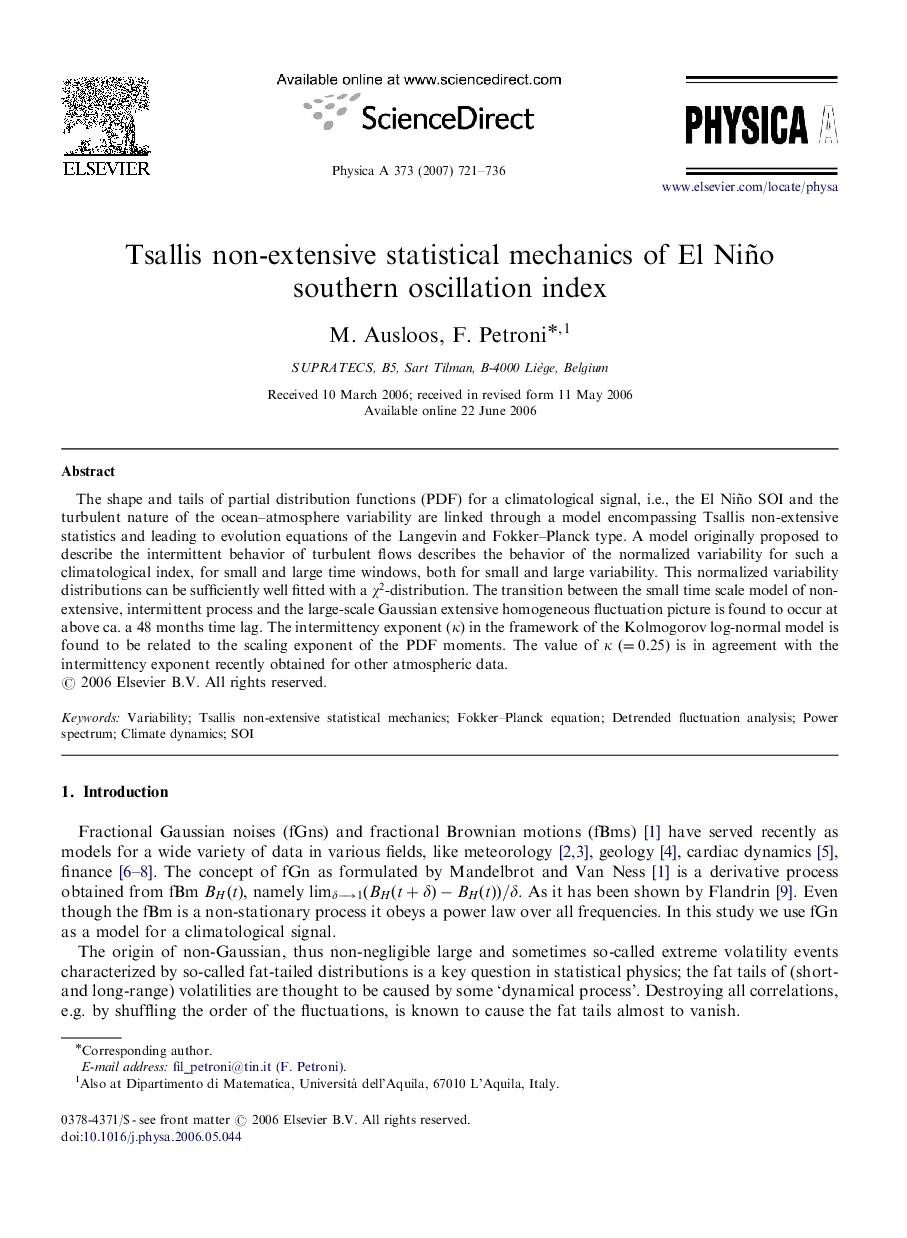| Article ID | Journal | Published Year | Pages | File Type |
|---|---|---|---|---|
| 978386 | Physica A: Statistical Mechanics and its Applications | 2007 | 16 Pages |
Abstract
The shape and tails of partial distribution functions (PDF) for a climatological signal, i.e., the El Niño SOI and the turbulent nature of the ocean-atmosphere variability are linked through a model encompassing Tsallis non-extensive statistics and leading to evolution equations of the Langevin and Fokker-Planck type. A model originally proposed to describe the intermittent behavior of turbulent flows describes the behavior of the normalized variability for such a climatological index, for small and large time windows, both for small and large variability. This normalized variability distributions can be sufficiently well fitted with a Ï2-distribution. The transition between the small time scale model of non-extensive, intermittent process and the large-scale Gaussian extensive homogeneous fluctuation picture is found to occur at above ca. a 48 months time lag. The intermittency exponent (κ) in the framework of the Kolmogorov log-normal model is found to be related to the scaling exponent of the PDF moments. The value of κ(=0.25) is in agreement with the intermittency exponent recently obtained for other atmospheric data.
Keywords
Related Topics
Physical Sciences and Engineering
Mathematics
Mathematical Physics
Authors
M. Ausloos, F. Petroni,
